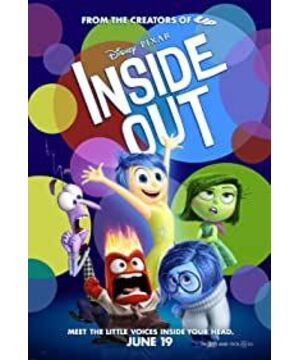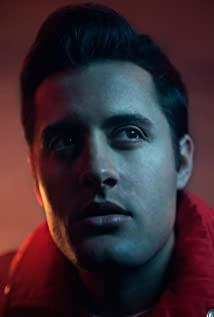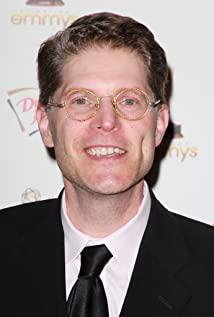"Good structure is ironclad. And when you sell your script, having a well-structured screenplay will show that you have really done the work in making a blueprint that is solid and sound."
—Blake Snyder, Save the Cat!
In 2016, Inside Out won the Best Animated Feature at the 88th Academy Awards and was also nominated for Best Original Screenplay, although I felt the level of competition for Best Animated Feature this year It is far less intense than 2014, or even less than 2017, but being able to win this honor is enough to show the gold content of this film. In fact, cartoons are another way of expressing movies to some extent. Except that they are not performed by real people, the structure of the story, the idea of the story, and the performance of the characters are no different from the real movies. In line with the principle of "the core of a good movie is a good story", I will specifically analyze the play structure of "Inside Out" in this article. I am not a playwright, and I am open to criticism and corrections, and do not accept any bullying~
Generally speaking, friends who are new to playwriting will know Syd Field's "three-act play structure", that is, Set up-Confrontation-Resolution.
It can be said that basically any good feature film can perfectly nest this model, which is why Syd Field is called "the father of play theory". However, as the number of readings increases, you will find that this structure is a bit "too basic". The three-act play structure builds a skeleton that can be easily understood by the entire universe, but how does each scene unfold? How should the relationship between the side characters and the main characters be in harmony? How to grasp the rhythm of the plot in 120 minutes? These issues still need to be further explored. Therefore, more and more playwrights have innovated their own theories on the basis of "three-act plays", and there may be dozens of them that are more familiar...
Take Blake Snyder, for example, in 2005, he wrote the best-selling playbook on Amazon that year, Save the Cat! ( Save the Cat! ), was basically a must-have in Hollywood back then. He summarizes a set of his own theories in this book: The Blake Snyder Beat Sheet. The popular understanding is that he played 15 rhythm points (Beat) in a story, and these rhythm points connect the whole story.
Each point in Figure 2 has a general nature or a transitional nature, with different functions. The numbers in parentheses at the end indicate where these rhythm points usually appear in a 110-minute movie. We can also find that Black and Syd's models have a lot in common:
Catalyst=Inciting incident is: catalyst, stimulating event;
Break into two=P.P1 ie: plot point 1, the story turns to the second act
Midpoint is: the midpoint of the story,
…
So sometimes, everyone can use the models to fit each other, how to use them easily...
Next I try to analyze Inside Out using Blake Snyder's model. Special note : Everyone has a different understanding of play theory, and there is no standard answer. After all, theory is theory, and it still has to serve practice. So I think…
1. Opening image
At the beginning of the film, the audience will have a general understanding of the tone, mood, and genre of the film. Its main purpose is to suck the audience firmly into the chair. The opening scene of Inside Out is a heartwarming, loving, story of growth and adventure. Everyone's behavior is controlled by 5 emotions in our mind, they are Joy (happy), Sadness (sadness), Fear (fear), Disgust (disgust) and Anger (anger), these 5 emotions help us to generate "Core memory" and enrich the different personalities that create us. In this film, these five emotions live in the "brain control room" of Riley, a little girl in Minnesota. Under Joy's control, Riley had a happy childhood.
2. Theme Stated
At the beginning of the film, we learn about Riley's life and how her various emotions are embodied in her life with Joy's narration. "Disgusted" with broccoli, "fearful" of hurting her own wires, "angry" Dad forced her to eat... But what Joy doesn't understand the most is the existence of Sadness, why does she always make Riley cry? Shouldn't such a cute little girl have a carefree childhood? At the same time, we can see that Joy is very good at solving problems. She always finds a way to make Riley happy when Riley encounters any situation. After all, she loves her little girl so much. I think here, the theme of the film has emerged, and some people will think that the theme of this film is "love can save everything", yes, this is indeed the surface theme of the film, but in fact the screenwriter is talking about "acceptance (( Accept)" story.
3. Set-up
This place is a bit different from Syd Field's Sep-up. This place is more like a foreshadowing, because it happens before the "stimulus event", and it can be called a foreshadowing in the 1st to 10th minutes of the film, and this film is 1 -7 minutes. Exactly, just before the film's opening credits. These parts allow us to fully understand the characters in the story and also see the goals of the protagonist of the story. In particular, the protagonist (Protagonist) of this film is not Riley. Although this is a story of emotions in her brain, the core character is Joy. Joy's words and actions drive the story, and her ultimate goal is to solve everything and make Riley happy.
4. Catalyst
This is easy to understand, that is, everything has to change! There is a very obvious reminder in this film. At the 7th minute, Joy said something: "Things couldn't be better! After all, Riley is 11 now, what could happen? What else could happen? Immediately after that, they sell the house and the Rileys are moving to San Francisco. Moving is an unknown, new thing for everyone.
5. Debate
At this point, everyone started a debate for the first time, but the core of this part is "how to solve the current problem most directly through the debate". No one likes the new home! The furniture hasn't come yet, can only sleep on the floor; Dad seems to have some problems with his business, he can't be with him; there are dead mice in the house... Riley is not happy! In this case, the protagonist Joy tries to make Riley and her friends happy. She reminds Riley to play "paper ice hockey" with her parents; eat her favorite Pizza with her mother; play her best "handrail" game... At the new school On the first day of my self-introduction, I tried my best to remind Riley of her happy past through the core memory ball and shared it with her new classmates and new teachers. Everything seems to be resolved easily.
6. Break into two
It needs to be clarified here that this "point" is very specific. It is one thing. In my opinion, it can be said to be the "fruit" in the causal relationship. Because of this result, the protagonist leaves the previous world and goes to the new world. In this film, Joy, in order to make sure Riley is happy on the first day of school, orders Sadness to stand in a circle and not interfere with anything on the console. But Sadness somehow touches a core memory ball, which causes Riley to cry and produce the first blue core memory request (blue for sadness), and Joy tries to stop Sadness. After a bit of confusion, Joy, Sadness and core memory balls were all sucked from the "brain control room" to the "long-term memory area" using a transport conduit. At this moment, which is this point, which is the "fruit" in this causal relationship I just mentioned, the first act turns to the second act.
7. B story
In a complex multi-line story, this is easier to understand, which is the side story. Everyone has seen the story of the protagonist, and now I want to see something else, a new character related to the main story. Bing Bong! He was Riley's imaginary friend as a kid and he spent a lot of happy time with Riley and their little rocket. But as Riley grew up, she hadn't thought of Bing Bong for a long time. Joy and Sadness meet Bing Bong in long-term memory, and they want help and promise to remind Riley of Bing Bong again
8. Fun and Game
This place should be the funniest part of the film, and it's also the part with a lot of space. Reflected in this film is the adventure story of Joy, Sadness and Bing Bong in the new world, their goal is to catch up with the "thinking train" and return to the "brain control room". They crossed the "Abstract Thinking Zone", the "Imagination Land". There is a foreshadowing here. Bing Bong cried sadly when he discovered that his "little rocket" was thrown into the forgotten area. Sadness went to comfort him, and Bing Bong finally regained his strength and led everyone to continue chasing the train.
9. Midpoint
This place is the most confusing. In Blake Snyder's theory, it is a bit similar to "false victory". In the previous class, the teacher explained that this midpoint is sometimes a specific point, and sometimes it is some small action point. Sequences that are grouped together. In my opinion, I think it was when their group successfully used the clown to create a nightmare to wake up Riley in "Dream Factory", restart the train of thought, and set off again. That point they were on the train was kind of like a "false victory" and they thought they finally made it, but then the train road was smashed, the train hit rock bottom, and they were back in long-term memory again. Also like I said, from waking up the clowns, from the time they're going to create nightmares, it's another combination of little things. From this point, everything went back to square one. In Blake Snyder's book, this point would be the opposite of All in lost, the former being like "everything wasn't so good" and the latter like "everything wasn't so bad".
10. Bad guys close in
Bad buy here is not the villain (Antagonist) in the film to some extent, but all the factors that hinder the success of the protagonist. Riley wakes up from a nightmare, and Fear, Disgust and Anger in the control room are back at work. Anger couldn't stand this kind of life any longer. Under the acquiescence of Fear and Disgust, he inserted the "escape" button in Riley's head, which prompted Riley to have the idea of running away from home, and prompted her to steal her mother's credit card to buy it. ticket. This behavior directly led to the collapse of the "honesty island" in Riley's 5 main personalities, breaking the way of the thought train. That's what "bad guys are approaching" means, and this point creates a huge setback. Who do you think is the villain in the film? Is it Sadness, the old troublemaker? Or Anger who just did something bad? Not really... The real villain is "Change". It was the impermanent "change" in this world that none of them expected.
11. All in lost + 12. Dark night of Soul
Putting these two points together is because many times these two points are very closely connected, and they appear in very similar states, but "nothing" is more of a behavioral result, they seem to lose everything and "smelt of death"; and "soul night" is spiritual, that is, the protagonist completely feels that he is finished at that moment. In this film, Joy and Bing Bong fall into the Forgotten Zone, and they face death (totally forgotten), at which point they "have nothing"; "Night of the Soul" is when Joy starts crying and feels really screwed.
13. Break into three
In fact, the turning point of the third act is also very close to the dark night of the soul. When the protagonist's mental state completely collapsed, eh, things took a turn for the better, and there was a new solution to the difficulty! In the film, when Joy was crying, she picked up a core memory ball. She was surprised to find that Riley, who lost the game, was sad alone. At this time, her parents went to comfort her, and her friends also came to lift Riley up. Gao, Riley became happy again. Joy recalled that when Bing Bong lost pain because of the little Rockets, Sadness comforted him in the past, and he was immediately motivated. At this time, Joy was enlightened! It turns out that sadness is also another way to be happy. Riley and Bing Bong are both comforted and inspired by Sadeness. So she suddenly got motivated, found Little Rocket in the forgotten area, and returned to the long-term memory area above with the help of Bing Bong. At this time, it turned to the third act, the ending.
14. Finale
The end does not mean the end. The outcome of the Inside Out is that in the end Joy and Sandness returned to the brain headquarters. Sadness pulled out the "escape" button from the festering console. Riley felt remorse and quickly got out of the car and went home. At home, Riley cried and confessed the mistake to her parents, and frankly stated why her mood has been volatile recently, that is, she did not like or adapt to the impact of the new environment and life on her. Mom and Dad didn't blame her. On the contrary, the three family members were honest with each other and embraced each other. Riley smiled happily. On the other hand, people in the control room re-acquainted with Sadness and admired her. She solved the problems that Joy couldn't solve, and everyone really accepted Sadness. Here, the theme is pointed very clearly. On the road of growth, we must learn to be honest with ourselves and learn to accept others. Learn to accept differences and respect every difference. This part is also the climax of the film, the great reconciliation of everyone, a happy ending.
15. Final image
The ending screen and the opening screen must be different, which means that they must be changed accordingly. At the end, Riley added many personality islands; more and more core memory balls are colorful, that is, a variety of emotions form the core memory; the console of the brain control room has been expanded, and everyone has a harmonious relationship; at the same time, Riley12 Years old and officially entering adolescence, everyone will face new challenges...
Brad Snyder's play model should be the most common model in Hollywood right now, and the subtitle of the book "Save the Cat" is also quite awesome: the only movie screenwriting guide you will ever need in your life. So for anyone who wants to learn how to write a good story in any situation, check it out. Using this model to analyze "Inside Out", we found that every rhythm point was stepped on very accurately, and the story was not boring. But in addition to the tight and solid structure of the play, it has to be said that the creative point of the story is the magic weapon for winning. The structure of the play can be copied, but no one can steal a good idea! Finally, I hope this article can give some new discussions to friends who love this film.
* Special thanks to screenwriter Hu Rong, thanks to sister Rong for discussing with me, I wish you always beautiful~
View more about Inside Out reviews











